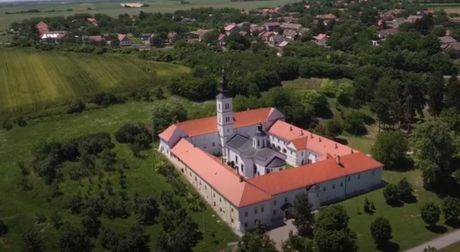This shrine is also a kind of mausoleum: Treasures of Krusedol used to be some of the richest
The Krusedol monastery on Mt. Fruska Gora suffered twice during history

The shrine of the Serbian Orthodox Church, which belongs to the Diocese of Srem, is a kind of mausoleum.
In the Fruska Gora monastery of Krusedol, in addition to the tomb of Serbian Princess Ljubica, the wife of Prince Milos Obrenovic, there are also the remains of King Milan Obrenovic, then Patriarch Arsenij IV Sakabenta, Duke Stefan Supljikac, Metropolitan Jovan Georgijevic and Metropolitan Petar Jovanovic, as well as other famous people.
A brief review of the history of the Krusedol monastery
Despotess Angelina Brankovic was the wife of the son of Despot Djuradj Brankovic, Stefan, also known as Stefan Slepi, who was at the head of the despotate for less than a year in the second half of the 15th century.
Shortly after his death, Despotess Angelina received a property in Srem, not far from today's town of Irig - a gift from Jaksic.
In the town of Krusedol, she built a place of worship which she dedicated to the feast of the Assumption of the Lord. Her son Djordje, later Bishop Maksim Brankovic, shortly after that built the male monastery of Krusedol. The funds to build the shrine were provided by Jovan Njagoja, the Vlach duke to whom he was related.
It is assumed that the monastery Krusedol was built in the first decade of the 16th century. Its existence was noted for the first time in a Turkish census from 1546.
In order to save their lives, but also the numerous monastery relics, the monks from Krusedol left the shrine during the Great Migration of Serbs and hid in the Hungarian town of Szentendre. After a few years, they returned to the monastery.
The remains of Serbian Patriarch Arsenij III Carnojevic were transferred to Krusedol in 1710 by Metropolitan Isaija Djakovic.
Unfortunately, shortly after that Turkish forces not only set fire to this Serbian shrine, but also looted it. To make the whole situation even more tragic, after the Battle of Petrovaradin in 1716, the remains of the founders of the monastery, who were made saints, were first cut up by Turkish soldiers, and then set on fire.
Reconstruction of the monastery began soon after, on several occasions during the 18th century.
The shrine suffers once again
Considering that the monastery Krusedol was renovated on several occasions, that also influenced its original architecture.
After the monastery was repainted during the 18th century the original frescoes got covered, but it was still established that the monastery was painted with frescoes for the first time shortly after its construction.
The iconostasis preserves icons from the period between the 16th and 18th centuries.
The treasures of the Krusedol monastery were considered the most impressive among all the shrines on Fruska Gora. And so it remained until the Second World War, more precisely until 1942, when Croatian Ustasha forces looted the monastery and took numerous relics to Zagreb.
Four years after that, what was preserved from the stolen items belonging to Krusedol was returned and today a part of those are kept in the monastery, and another in the Museum of the Serbian Orthodox Church in Belgrade.
(Telegraf.rs)
Telegraf.rs zadržava sva prava nad sadržajem. Za preuzimanje sadržaja pogledajte uputstva na stranici Uslovi korišćenja.




